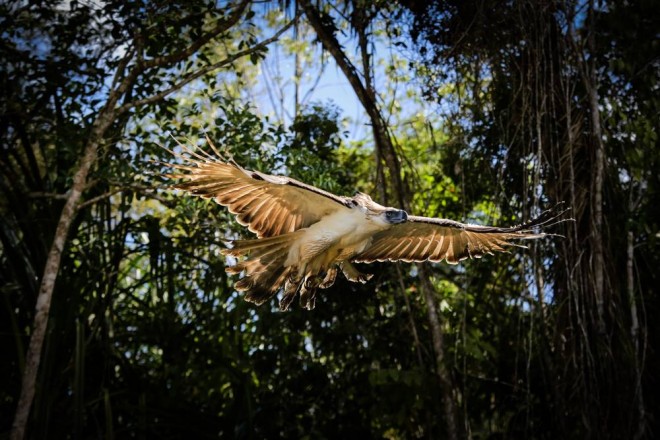An environmental group on Thursday criticized the government for allegedly giving low priority to the protection of the Philippines’ endangered species.
The statement came days after a Philippine Eagle named “Pamana” was found dead in Davao Oriental, inside a United Nations Educational, Scientific and Cultural Organization (Unesco) heritage site — the Mt. Hamiguitan Range.
Pamana was nursed back to health in 2012 after it was shot twice. After two years of rehabilitation, it was released into the wild, only to be found shot dead. Its decomposing body was found more than two months after it was released on June 12.
Kalikasan People’s Network for the Environment (Kalikasan PNE) said Pamana’s death exposed the government’s inadequate support for biodiversity protection.
“The unchecked poaching in Mt. Hamiguitan, despite being a protected area and a recently declared world heritage site, stems from the lack of funding, manpower, and other capacities put into enforcing the protection of the Philippine Eagle and other endangered and threatened biodiversity in the said wildlife sanctuary,” Kalikasan PNE national coordinator Clemente Bautista said in a statement.
Bautista called the government’s conservation program “grossly incapable.”
He said a number of laws on wildlife protection have been neglected: Republic Act (R.A.) No. 9303 or the Mt. Hamiguitan Range and Wildlife Sanctuary Act, R.A. 9512 or the National Environmental Awareness and Education Act, and R.A. 9147 or the Wildlife Resources Conservation and Protection Act.
Bautista said local communities are also not given enough “environmental education” when they are the ones who should be the government’s “primary partner in protecting our endangered Philippine Eagles and addressing wildlife poaching in Mt. Hamiguitan.”
“While wildlife shooting has been a constant threat to 90 percent of the eagles released into the wild by the Philippine Eagle Foundation, the worsening destruction of their habitat put them in this perpetually threatened state in the first place,” Bautista said. “Despite the declaration as a world heritage site of Mt. Hamiguitan, the site where Pamana was released, we still do not have enough manpower to secure an area of such globally important status.”
“Worse, the Aquino government continues to allow logging and mining concessions in the area,” he claimed.
Citing information from Mindanao-based environmental network Panalipdan Mindanao, Clemente said a Chinese firm Youbang Mining Corporation (PhilYoubang) has been given a mining permit and has an ongoing logging operation.
“In Panalipdan’s report, Philyoubang’s operations have damaged second growth trees and other vegetation in Sitio Sopsopon, Brgy. Macambol, which is located between two protected areas — the Pujada Bay Protected Seascape and the Mt. Hamiguitan Range,” Kalikasan PNE said.
Bautista said Pamana or the Philippine Eagle is not only a national symbol but also an “ecologically important species” because of its role in the forest’s food chain.
“Philippine Eagles are also important biological indicators of a forest’s health and growth, as a mating couple of eagles require at least 50 square kilometers of forest cover for their home range. The dwindling population of Philippine Eagles means we are still failing at protecting our forests,” he explained.
